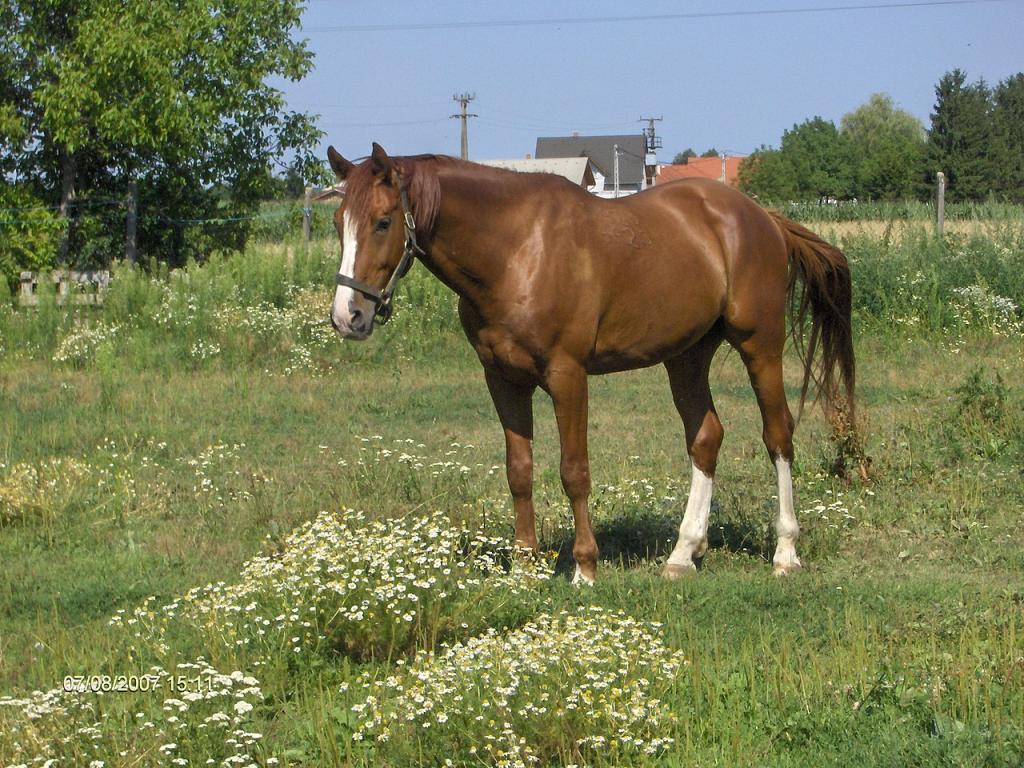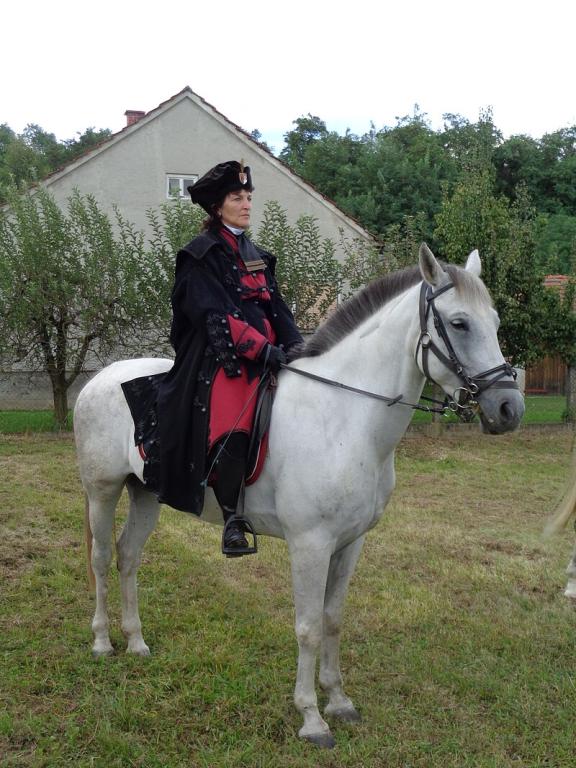
Continent: Europe
Country: Hungary
Weight: 450 – 600 kg
Height: 155 – 170 cm


The Gidran is a Hungarian horse breed, originating from the famous Imperial and Royal Stud of Mezőhegyes, founded in 1785 in the Great Hungarian Plain. Its creation dates back to the early 19th century, with the arrival in 1816 of the Arabian stallion Gidran Senior, imported from Syria.
This stallion was crossed with local Hungarian mares, as well as with Thoroughbreds and Spanish horses, in order to combine oriental nobility with European size and strength.
The Gidran was thus designed as an oriental half-bred, elegant and energetic, initially intended for the Austro-Hungarian cavalry and military harnesses, but also suitable for light agriculture and versatile uses.
Today, it is considered a living heritage of Hungary, a symbol of the Arabian influence in European horse breeding and of the tradition of the great imperial studs.
The Gidran is closely linked to the Great Hungarian Plain, particularly around the Imperial and Royal Stud of Mezőhegyes, where the breed originated. Founded in 1785, this stud remains the historic heart of selection. Even today, Hungary holds the majority of the population, mainly in the eastern and southern regions of the country.
Although it remained confidential, the breed spread occasionally:
The global population of the Gidran is currently very small, estimated at only a few hundred heads. It is recognized as an endangered breed, and breeding is concentrated in strict genetic conservation programs.
Thus, the breeding area of the Gidran remains centered on Hungary, with small satellite populations in Central Europe, reflecting its Austro-Hungarian heritage.
The Gidran is one of the rare examples of an oriental half-bred preserved in Europe. A direct heir of the Arabian through its founding stallion, it combines oriental nobility, graceful gaits and natural endurance, with the contribution of the Thoroughbred, which gave it height and power.
Alongside the Nonius, the Lipizzan and the Kisber Felver, the Gidran is a pillar of Hungarian breeding. It is recorded in a closed stud-book, ensuring the preservation of its maternal lines. Its current rarity places it among breeds of high patrimonial value.
Selected to be versatile, the Gidran contributed to the genetic base of modern Hungarian sport horses by transmitting:
Due to its reduced numbers, the Gidran is now considered an endangered genetic resource. Its preservation is crucial to maintain a reservoir of improved oriental blood, capable of bringing elegance, endurance and character to modern breeding programs.
The story of the Gidran begins in 1816, when the Arabian stallion Gidran Senior, born in Syria and imported via the Ottoman Empire, was introduced at the Imperial and Royal Stud of Mezőhegyes in Hungary. Crossed with local Hungarian mares, as well as with Thoroughbreds and Spanish horses, he gave rise to a line of chestnut oriental horses, later established as a distinct breed.
Throughout the 19th century, the Gidran was used as a cavalry horse in the Austro-Hungarian army. Its oriental nobility, resistance, and natural elegance made it a sought-after horse for light cavalry and military harnesses. It was also employed in light agricultural work, proving its versatility.
With the progressive mechanization and the disappearance of large cavalry units, the breed lost its strategic importance. Its numbers dropped drastically, to the point where the Gidran was classified as an endangered breed. Several lines disappeared, reducing the available genetic diversity.
From the second half of the 20th century, specific programs were implemented in Hungary to save the Gidran from extinction. The modern stud-book, published in 2005, officially registered the remaining lines and allowed for more rigorous genetic management.
The Gidran is now recognized as a cultural and historical treasure of Hungary. Although still rare, it is valued in:
In summary, the history of the Gidran reflects that of the great Hungarian imperial studs, moving from military glory to heritage preservation, with today a future turned towards conservation and sport rediscovery.
The Gidran inherited from its Arabian ancestry a lively and energetic character. It is an intelligent horse, always attentive to its surroundings, with great sensitivity that requires an experienced and respectful rider.
Selected for cavalry and military harness, it has a courageous temperament and strong stamina. It proves to be willing, with a durable mindset, making it suitable both for sustained work and for modern sports.
Although spirited, the Gidran is also balanced when provided with consistent training. It adapts to various uses: sport leisure, dressage, show jumping, driving. Its spirited character and presence also make it appreciated in equestrian shows.
Affectionate and loyal, it creates a strong bond with its rider once trust is established. However, its sensitivity and energy make it less suitable for beginners or equine-assisted therapy.
“The Gidran is a fiery and refined horse: an improved oriental, both elegant, willing and courageous, winning hearts with its nobility and loyalty.”
The Gidran is listed among the endangered horse breeds in Hungary. Its numbers are low, raising risks of inbreeding and loss of genetic diversity. However, it benefits from official recognition and preservation programs led by the Hungarian state and national studs.
Efforts are being made to:
Thanks to its elegant type and oriental origins, the Gidran is regaining attention:
The survival of the Gidran will depend on its valorization as an identity horse of Hungary, just like the Lipizzaner in Austria or the Lusitano in Portugal.
Its rarity could even become an asset, turning it into a niche breed, sought after for its elegance and oriental heritage.
In summary, the future of the Gidran relies on a fragile balance between genetic conservation and modern valorization, both sportive and cultural.
The Gidran benefits from its Arabian blood, known for natural endurance and longevity. It is a solid horse, capable of enduring prolonged efforts, with good recovery capacity.
No major hereditary issues are specifically identified for the breed. However, like all small populations, the Gidran faces increased risks of inbreeding, which can lead to:
Thanks to veterinary follow-up and genetic conservation programs in Hungary, the breed remains generally healthy. The current priority is to maintain sufficient genetic diversity to avoid the emergence of hereditary defects linked to the narrowing of the breeding base.